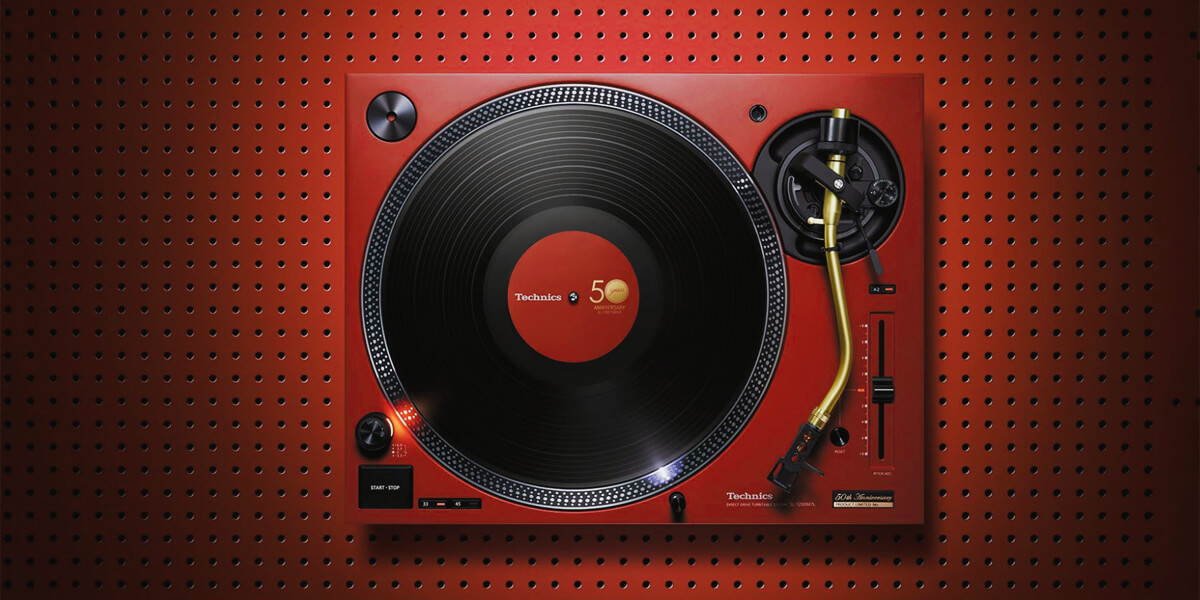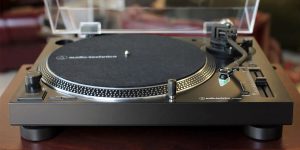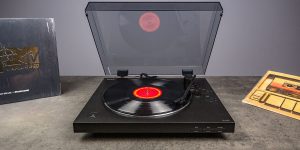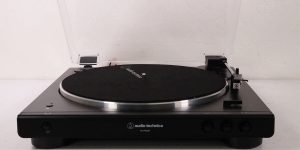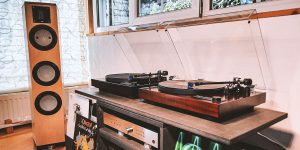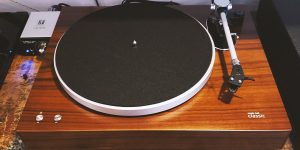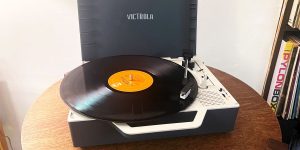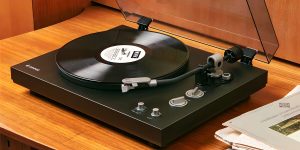If you’re just starting to explore the world of vinyl, you might find yourself confronted with a maze of unfamiliar terminology and complex-sounding component names. In this article, we will delve into the record player anatomy, unraveling the mysteries and shedding light on the various components that make up a turntable.
Plinth
Picture the plinth as the solid and reliable foundation of your turntable. It’s the component that forms the bedrock on which all the other parts rest. The plinth not only provides stability but also plays an important role in preserving the purity and accuracy of the music you’ll enjoy.
When it comes to plinths, a variety of materials can be used, each bringing its own unique character to the turntable’s performance, so let’s take a look at a few noteworthy options:
- Wood. Plinths made from wood are often praised for their natural ability to dampen vibrations, ensuring a smooth and balanced playback experience. Wood adds a touch of elegance to your turntable setup while providing excellent acoustic properties.
- Acrylic. If you’re seeking transparency and precision, an acrylic plinth might be the way to go. Acrylic is known for its superb clarity, allowing the subtle details in your vinyl recordings to shine through. It’s a material that not only looks sleek but also contributes to accurate sound reproduction.
- Metal. Plinths crafted from metal bring a robust and sturdy presence to the turntable. They excel in stability, reducing resonance and vibrations that could otherwise interfere with the playback quality. Metal plinths are often chosen for their durability and ability to withstand external disturbances, resulting in a more immersive listening experience.
Now, let’s address the vital aspect of stability when it comes to the plinth. Imagine trying to enjoy your favorite album while the turntable wobbles or shakes. Not exactly an ideal scenario, right? That’s where the plinth steps in to save the day.
The plinth ensures minimal vibrations and resonance. This stability translates into accurate sound reproduction.
In my years of experience with turntables, I’ve come to appreciate the importance of a well-crafted plinth. It’s not just a mere base; it’s the unsung hero that enhances your listening pleasure, keeping your vinyl spinning smoothly and your music sounding exceptional.
So, next time you explore the parts of a record player, pay close attention to the plinth. Its choice of material and stability can have a tangible impact on the sonic performance, allowing you to fully immerse yourself in the captivating world of vinyl music playback.
Platter
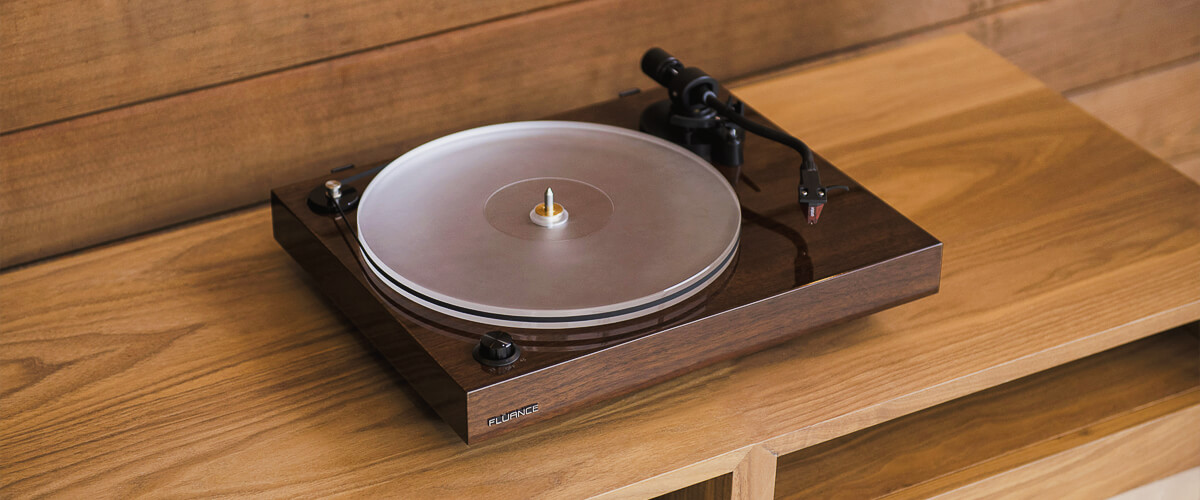
Let’s take a spin into the world of the platter, a key component that keeps the groove groovin’ on your vinyl player. This rotating superstar is where the magic happens, as it cradles your beloved records and sets them in motion. In this section, we’ll uncover the secrets of the platter, exploring its purpose and the fascinating impact of different materials and designs.
Regarding platters, the material and design choices can really shake up the party. Here are some noteworthy options that bring their own groove to the table:
- Aluminum. Picture an aluminum platter as the cool cat of the bunch. It’s lightweight yet rock-solid, providing a stable and consistent rotation speed. With its anti-resonant properties, this material keeps unwanted vibrations at bay, ensuring your tunes play with precision and clarity.
- Acrylic. If you’re looking for a platter that’s all about smooth moves, acrylic is the star. Its sleek and friction-reducing surface means less static, less slipping, and more seamless spins. Plus, its vibration-damping powers give your music that extra punch, making every note pop.
- Glass. Ah, the glass platter, a true showstopper. Its transparent beauty adds a touch of elegance to your turntable setup. But it’s not just a pretty face—this dense and inert material keeps things steady. Say goodbye to unwanted resonances and hello to stable rotation, allowing your records to sing with crystal-clear fidelity.
But it’s not just about the material; the platter’s design can make all the difference too. Thickness, shape, and mass distribution come into play, determining the platter’s stability and performance. Thick platters bring party vibes with better speed consistency and vibration control. And a well-designed mass distribution keeps those wobbles and flutters in check, ensuring a smooth and reliable spin.
In my musical journey, I’ve discovered that experimenting with different platter materials and designs can be a sonic adventure. It’s like exploring various dance floors—each one offers its own rhythm and flavor. So don’t be afraid to mix it up and find the perfect groove that gets your music moving just the way you like it.
Motor
The motor is the beating heart of a vinyl player, driving the rotation of the platter and setting the stage for sonic bliss. Let’s explore the functions and key considerations of this vital component.
Let’s delve into the benefits of different motor types and how they contribute to the overall performance of a turntable.
- AC vs. DC motors:
- AC motors. Found in entry-level and vintage turntables, they rely on power supply frequency for speed control. While they can experience slight speed fluctuations, manufacturers often implement speed control mechanisms to ensure reasonable stability.
- DC motors. Common in high-end and modern turntables, they offer precise speed control and excellent stability. Their independent speed control mechanisms make them ideal for uncompromising performance.
- Speed stability and torque:
- Speed stability. Crucial for accurate music reproduction, a stable motor maintains consistent rotation speed throughout playback.
- Torque. It determines the motor’s ability to maintain steady rotation, particularly when encountering demanding sections of a record or when using heavier tonearms. Motors with higher torque excel in handling challenging circumstances, delivering reliable performance and smooth playback.
So, a reliable motor ensures a consistent rhythm, allowing you to fully immerse yourself in the magic of vinyl music.
Tonearm
The tonearm is the graceful arm that delicately holds the stylus and traces the intricate grooves of your vinyl records. This essential component of a vinyl turntable plays a crucial role in extracting every nuance and detail from the record’s surface.
When it comes to tonearms, several types are available, each with its advantages. Let’s explore a few worthy options:
- Straight tonearms:
- Minimalist design with a linear trajectory.
- Precise tracking and excellent channel separation.
- S-shaped tonearms:
- Common and versatile design.
- The curved shape reduces tracking errors and resonance.
- J-shaped tonearms:
- The pronounced curve for reduced inner-groove distortion.
- Maintains consistent tracking force across the record.
Here is a list of tonearm functions:
- Holds the cartridge and stylus for accurate tracking.
- Provides stable motion and minimal distortion.
- Carries the audio signal from the cartridge to the amplifier.
Each type of tonearm offers unique advantages, contributing to the performance and musicality of the turntable.
Cartridge and stylus
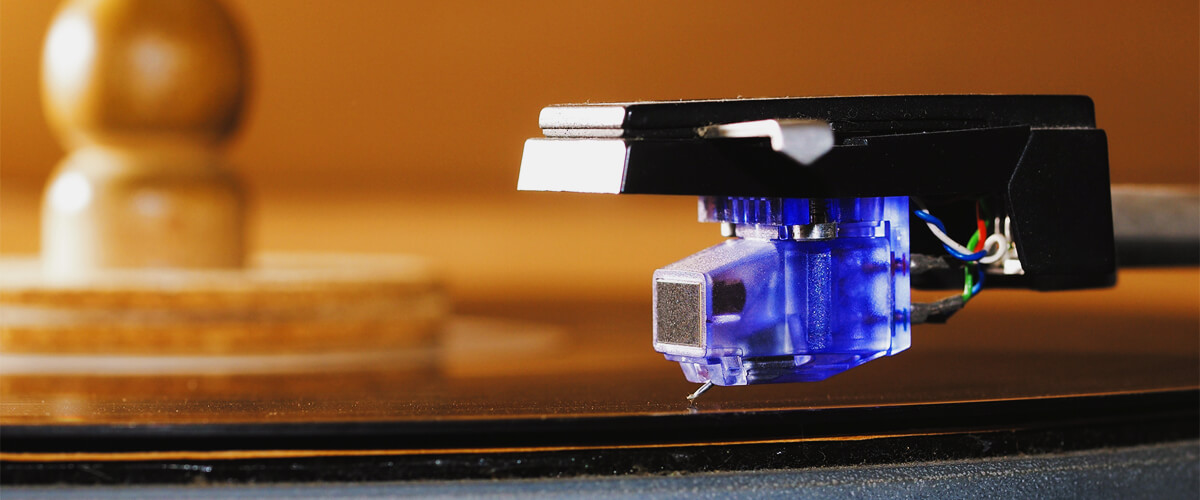
In the anatomy of a turntable, the cartridge and stylus form the dynamic duo that extracts the musical magic locked within the grooves of your vinyl records. These vital components of a turntable play a fundamental role in capturing and reproducing the audio with precision and finesse.
Let’s explore the functions of the cartridge and stylus:
| Cartridge | Stylus |
|---|---|
| Houses the stylus and converts mechanical vibrations into electrical signal. | The delicate tip that physically touches the record’s grooves, translating microscopic modulations into vibrations. |
The cartridge’s design, materials, and construction, along with the stylus shape and material, greatly impact sound quality, detail retrieval, and the preservation of your records. Investing in a high-quality cartridge and stylus can elevate your vinyl listening experience.
Phono preamp
The phono preamp amplifies the weak signal and applies the necessary equalization for accurate music reproduction. Let’s explore the purpose and functions of the phono preamp in the vinyl playback chain.
The phono preamp serves several important functions:
- Amplification. The phono preamp boosts the low-level signal from the cartridge to line-level strength.
- RIAA equalization. It applies the opposite equalization curve to restore the original frequency response of vinyl records.
- Signal processing. It offers features like gain adjustment, cartridge loading options, and subsonic filtering for customization and optimization.
The phono preamp acts as a guardian, ensuring that the delicate audio signal from your turntable is faithfully amplified and equalized. It plays a vital role in unlocking the true potential of your vinyl listening experience.
Understanding the anatomy of a turntable is essential for any vinyl enthusiast. From the plinth to the cartridge, each part plays a vital role in delivering a captivating audio experience.

